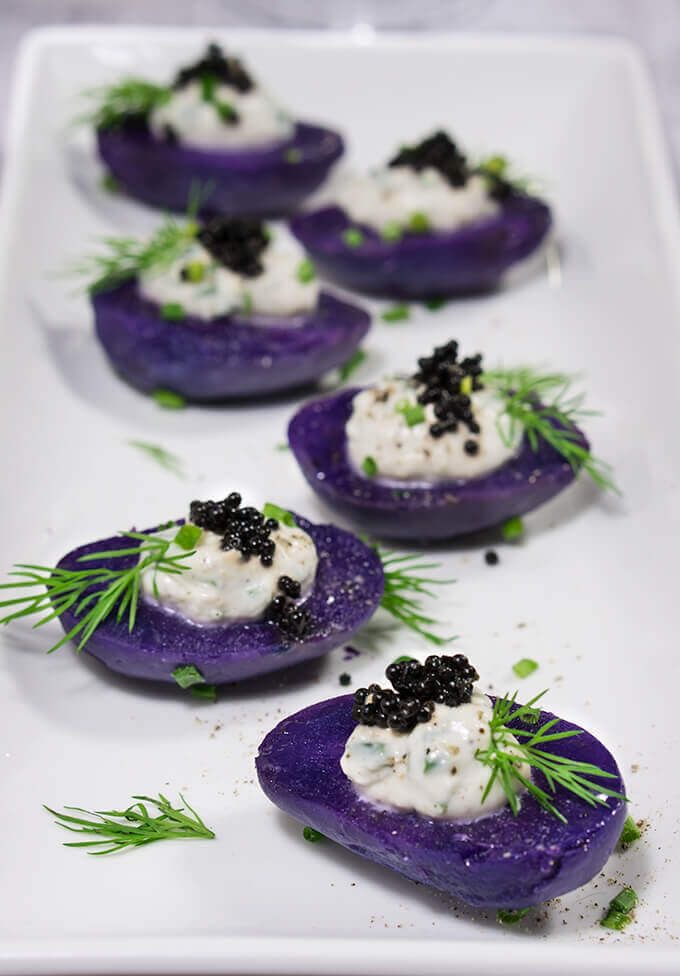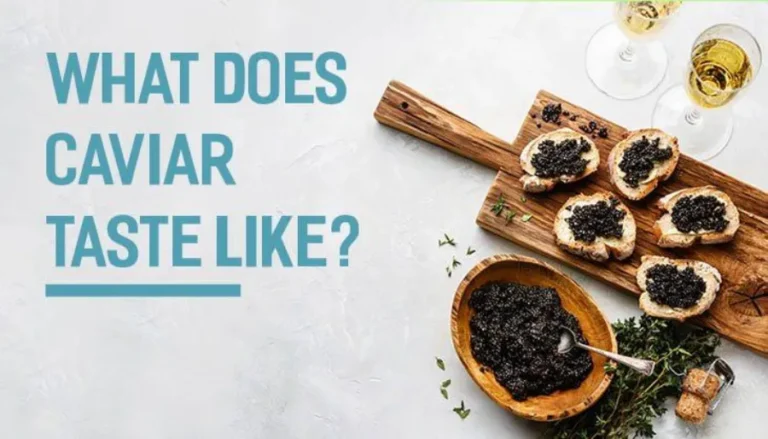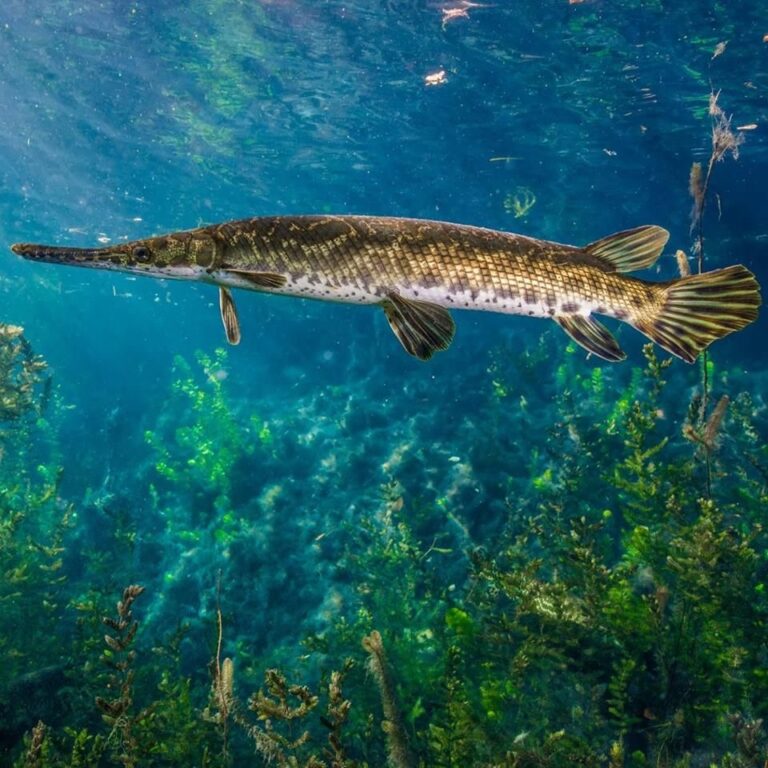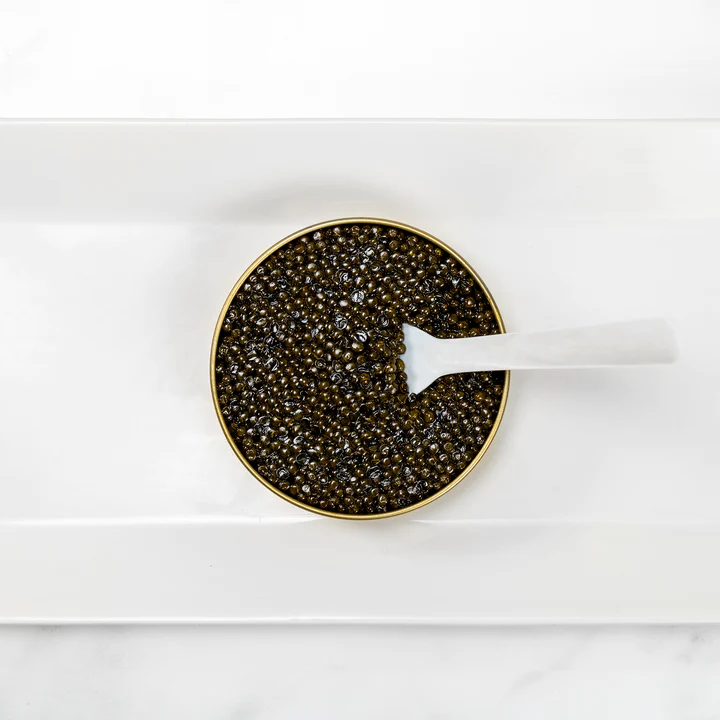Caviar Fish – Why Sturgeon Caviar or Roe is the Ultimate Gourmet Choice
Sturgeon Caviar Fish-Most Expensive Roe
Caviar is synonymous with luxury and gourmet cuisine, but few people understand exactly where this prized delicacy comes from or what fish are responsible for producing the coveted roe known as caviar. Often referred to as caviar fish, certain species of fish, primarily sturgeon, are the source of this delicacy. However, the term “caviar” can also encompass other types of fish roe.
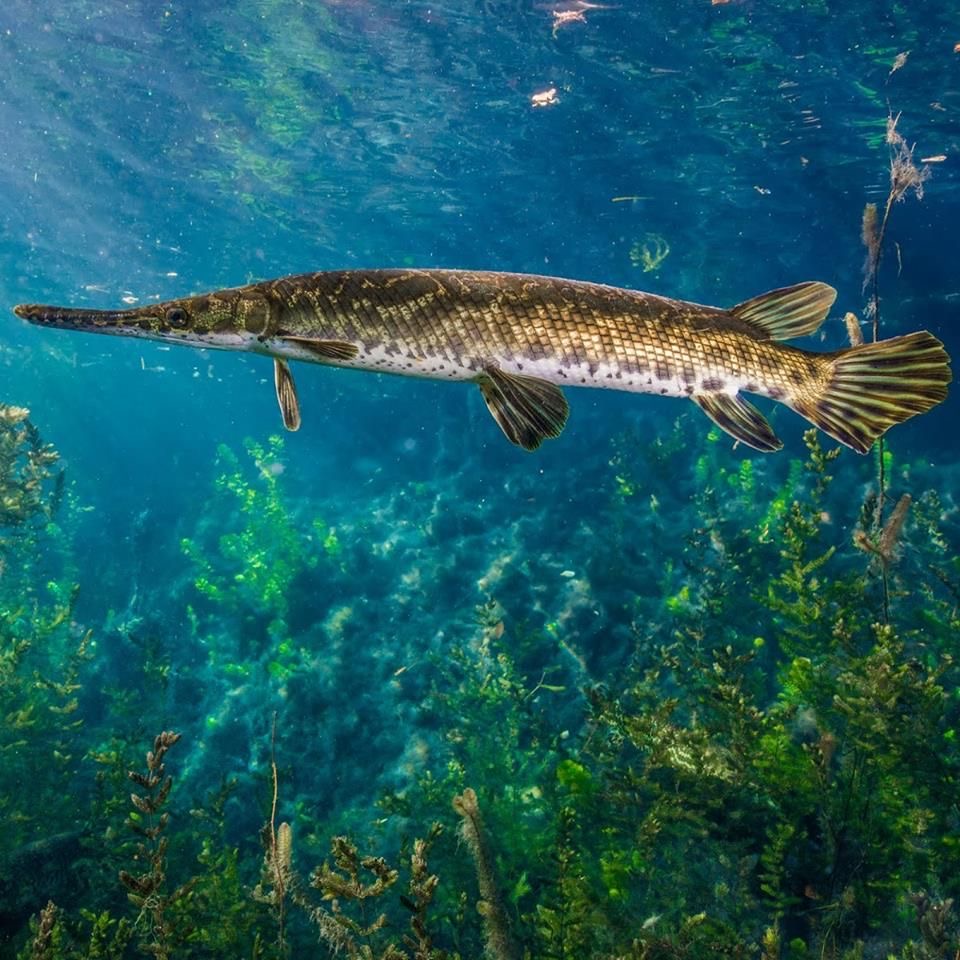
What is Sturgeon Caviar fish and How is it Different from Roe?
Caviar refers to the salted eggs, or roe, harvested from fish, primarily from the sturgeon family. These eggs are cleaned, processed, and lightly salted before being packaged for consumption. The end result is caviar—small, shiny, bead-like eggs that burst with flavor when eaten.
Traditionally, caviar exclusively refers to the roe from sturgeon, particularly species found in the Caspian and Black Seas. However, over time, roe from other fish species has also been marketed as “caviar,” though these are often considered to be of lesser quality compared to traditional sturgeon caviar fish.
The Sturgeon Caviar Production
The sturgeon is the primary fish responsible for producing true caviar. There are around 27 species of sturgeon, and several of these produce the most valuable and highly sought-after caviar. Sturgeon are ancient caviar fish, dating back over 250 million years, and they are known for their large size and slow growth. Some species of sturgeon can live for over 100 years, and they typically don’t begin producing eggs until they are around 15 years old. This slow maturation process is one of the reasons why caviar is so expensive—it takes years before the fish are ready to produce roe.
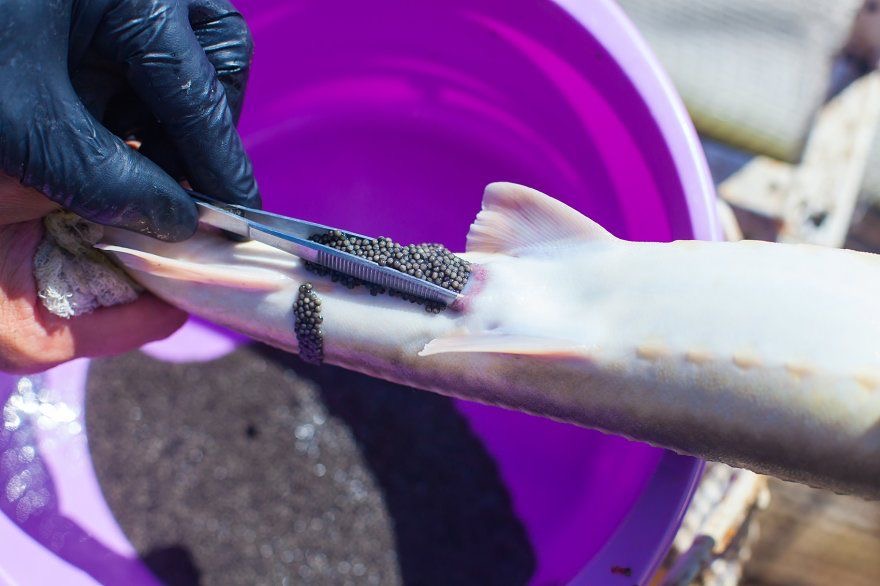
Sturgeon Family Producing Caviar
Several species of sturgeon are famous for producing caviar, and each type of caviar has its own distinct flavor, texture, and price range. The most notable types include:
- Beluga Sturgeon: The beluga sturgeon is the most famous and sought-after source of caviar fish. Native to the Caspian Sea, beluga sturgeon produce large, soft eggs that are often considered the best-tasting and most luxurious caviar available. Beluga caviar is known for its delicate flavor and smooth texture, but it also comes with a hefty price tag, making it one of the most expensive types of caviar in the world.
- Osetra Sturgeon: The osetra sturgeon also hails from the Caspian Sea and produces medium-sized eggs. Osetra caviar has a firmer texture than beluga caviar and offers a more complex, nutty flavor. Osetra caviar is highly valued, though it is typically less expensive than beluga caviar.
- Sevruga Sturgeon: Sevruga sturgeon produce smaller eggs that have a stronger flavor than beluga or osetra caviar. Sevruga caviar is often more affordable than other types of sturgeon fish caviar, but it still offers a luxurious experience for those who enjoy bolder, more intense flavors.
- Sterlet Sturgeon: The sterlet is a smaller species of sturgeon, but it also produces fine caviar. Historically, sterlet caviar was reserved for Russian royalty, and it remains a prized variety today, though it is less commonly found than beluga, osetra, or sevruga caviar.
Types of Fish Used for Caviar
While true caviar comes from sturgeon, there are several other types of fish that produce roe commonly marketed as caviar. These alternatives are often less expensive than sturgeon caviar but can still be enjoyed as a delicacy. Some of the most notable alternatives include:
- Salmon: Salmon roe, also known as red caviar fish, is one of the most popular alternatives to sturgeon caviar. Salmon eggs are larger and more brightly colored than sturgeon caviar, often appearing in shades of orange or red. While salmon roe has a more pronounced flavor and a firmer texture than sturgeon caviar, it is significantly less expensive, making it a popular choice for those seeking a more affordable option.
- Trout: Trout roe is another alternative to sturgeon caviar. The eggs are smaller and have a mild, slightly sweet flavor. Trout caviar fish is often a favorite for those who prefer a subtler taste compared to stronger-tasting roe like salmon.
- Paddlefish: Paddlefish roe is often used as a more affordable alternative to sturgeon caviar. Paddlefish are closely related to sturgeon, and their roe has a similar texture and flavor, though it is generally milder. Paddlefish caviar is typically gray in color and offers a buttery taste.
- Lumpfish: Lumpfish roe is one of the most affordable options available. Lumpfish eggs are naturally small and black, but they are often dyed to resemble the appearance of sturgeon caviar. The flavor of lumpfish caviar is mild, and it is commonly used as a garnish or as a more accessible option for caviar lovers on a budget.
- Whitefish: Whitefish roe is golden-yellow in color and has a delicate, mild flavor. It is often used in place of more expensive types of caviar and is enjoyed for its subtle taste and smooth texture.
Why is Caviar So Expensive?
The high price of caviar is largely due to the biology of the fish that produce it. Sturgeon, particularly the larger species like beluga, take many years to mature and begin producing eggs. Additionally, sturgeon are increasingly rare due to overfishing and environmental pressures, which has led to strict regulations on the harvesting of sturgeon roe. As a result, many producers now rely on farmed sturgeon to meet the demand for caviar, but the slow growth rate of the caviar fish and the labor-intensive process of harvesting the eggs still contribute to the high cost.
The rarity and difficulty of producing caviar also play a significant role in its price. Sturgeon are often considered endangered or vulnerable species, which makes wild-caught sturgeon caviar even more expensive. Conservation efforts and sustainable farming practices have helped alleviate some of the pressures on wild sturgeon populations, but the process of raising and harvesting sturgeon is still a long and costly endeavor.
Roe and Caviar Delicacy
Caviar is a luxurious delicacy that has been enjoyed for centuries, and it continues to be one of the most expensive and sought-after foods in the world. The term caviar fish typically refers to sturgeon, the ancient and slow-growing fish responsible for producing the most prized types of caviar, such as beluga, osetra, and sevruga. However, roe from other fish like salmon, trout, and paddlefish are also marketed as caviar, offering more affordable alternatives to the traditional sturgeon varieties.
While caviar’s high price may put it out of reach for many, its unique texture and flavor make it a delicacy that’s treasured by food connoisseurs and gourmands around the globe. Whether you’re indulging in traditional sturgeon caviar or exploring alternatives like salmon or trout roe, the world of caviar offers a wide range of experiences to suit any palate.
Sustainable caviar refers to caviar that is harvested in a way that minimizes harm to the environment and fish populations. Due to overfishing and environmental damage, many species are endangered. Vegan caviar or vegetarian caviar is on the other made from plant-based ingredients making it suitable for vegans. Vegan and sustainable caviar offer ethical and environmentally responsible alternatives to traditional fish roe.

